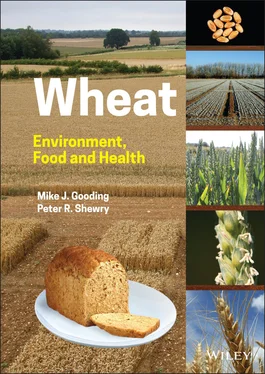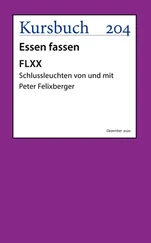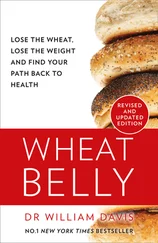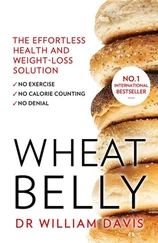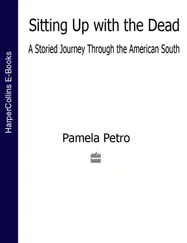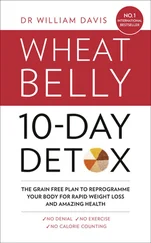In this chapter, we have discussed the importance of wheat and briefly explained some of the reasons for that importance in terms of the diversity of wheat adaptation and of wheat use. In the next four chapters we will explore the environmental requirements and sustainability of wheat production. The chapter headings reflect what has always been known by wheat farmers: that for high yields you need a good soil, ample water, mild temperatures, and sunshine. Chapter 6(Canopy management) evaluates farming practices associated with increasing land‐use efficiency. In subsequent chapters we return to the wheat grain and its use, with respect to grain development and composition ( Chapter 7); grain processing and flour functionality ( Chapter 8); and the role of wheat in diet and health ( Chapter 9). We conclude with a chapter on modern breeding methods and targets for further sustaining wheat production and its use for food security.
1 AHDB (2011). HGCA Grain Storage Guide for Cereals and Oilseeds, 3e. Agriculture and Horticulture Development Board.
2 Allaby, R.G., Stevens, C., Lucas, L. et al. (2017). Geographic mosaics and changing rates of cereal domestication. Philosophical Transactions of the Royal Society B: Biological Sciences 372: 20160429. https://doi.org/10.1098/rstb.2016.0429.
3 Allen, A.M., Wilkinson, P., Burridge, A. et al. (2021). The role of gene flow and chromosomal instability in shaping the bread wheat genome. Nature Plants 7: 172–183. https://doi.org/10.1038/s41477‐020‐00845‐2.
4 Anderson, K., Ivanic, M., and Martin, W. (2013). Food price spikes, price insulation, and poverty. In: The Economics of Food Price Volatility (eds. J.‐P. Chavas, J. Hummels and B.D. Wright), 311–339. National Bureau of Economic Research https://www.nber.org/books‐and‐chapters/economics‐food‐price‐volatility/food‐price‐spikes‐price‐insulation‐and‐poverty.
5 Arranz‐Otaegui, A., Carretero, L.G., Ramsey, M.N. et al. (2018). Archaebotanical evidence reveals the origins of bread 14400 years ago in northeastern Jordan. Proceedings of the National Academy of Science, USA 115: 7925–7930. https://doi.org/10.1073/pnas.1801071115.
6 Austin, R.B., Morgan, C.L., Ford, M.A. et al. (1982). Flag leaf photosynthesis of Triticum aestivum and related diploid and tetraploid species. Annals of Botany 49 (2): 177–189. https://doi.org/10.1093/oxfordjournals.aob.a086238.
7 Austin, R.B., Ford, M.A., and Morgan, C.L. (1989). Genetic improvement in the yield of winter‐wheat – a further evaluation. Journal of Agricultural Science 112: 295–301. https://doi.org/10.1017/S0021859600085749.
8 Bakker, J.T. (1999). The mills‐bakeries of Ostia: description and interpretation. Dutch Monographs on Ancient History and Archaeology 21: 131.
9 Barber, H.M., Carney, J., Alghabari, F. et al. (2015). Decimal growth stages for precision wheat production in changing environments? Annals of Applied Biology 166 (3): 355–371. https://doi.org/10.1111/aab.12207.
10 Bates, B., Lennox, A., Prentice, A. et al. (Eds.) (2014a). National Diet and Nutrition Survey: Results from Years 1–4 (combined) of the Rolling Programme (2008/2009–2011/2012). Executive Summary. Public Health England. https://assets.publishing.service.gov.uk/government/uploads/system/uploads/attachment_data/file/594360/NDNS_Y1_to_4_UK_report_executive_summary_revised_February_2017.pdf
11 Bates, B., Lennox, A., Prentice, A. et al. (Eds.) (2014b). National Diet and Nutrition Survey: Results from Years 1‐4 (combined) of the Rolling Programme (2008/2009–2011/2012). Public Health England. https://assets.publishing.service.gov.uk/government/uploads/system/uploads/attachment_data/file/216484/dh_128550.pdf
12 Bellemare, M.F. (2015). Rising food prices, food price volatility, and social unrest. American Journal of Agricultural Economics 97 (1): 1–21. https://doi.org/10.1093/ajae/aau038.
13 Blackman, J.A. and Payne, P.I. (1987). Grain quality. In: Wheat Breeding, Its Scientific Basis (ed. F.G.H. Lupton), 455–485. Chapman and Hall.
14 Borojevic, K. and Borojevic, K. (2005). The transfer and history of “reduced height genes” (Rht) in wheat from Japan to Europe. Journal of Heredity 96 (4): 455–459. https://doi.org/10.1093/jhered/esi060.
15 Braun, H.J. and Sãulescu, N.N. (2002). Breeding winter and facultative wheat. In: Bread Wheat Improvement and Production. FAO Plant Production and Protection Series No. 30 (eds. B.C. Curtis, S. Rajaram and H. Gómez Macpherson). Food and Agriculture Organization of the United Nations http://www.fao.org/3/Y4011E/y4011e0f.htm#bm15.
16 Breasted, J.H. (1916). Ancient Times: A History of the Early World. An Introduction to the Study of Ancient History and the Career of Early Man. Ginn and Company.
17 Brinton, J. and Uauy, C. (2019). A reductionist approach to dissecting grain weight and yield in wheat. Journal of Integrated Plant Biology 61: 337–358. https://doi.org/10.1111/jipb.12741.
18 Brouns, F., van Rooy, G., Shewry, P. et al. (2019). Adverse reactions to wheat or wheat components. Comprehensive Reviews in Food Science and Food Safety 18: 1437–1452. https://doi.org/10.1111/1541‐4337.12475.
19 Carson, G.R. and Edwards, N.M. (2009). Criteria of wheat and flour quality. In: Wheat: Chemistry and Technology, 4e (eds. K. Khan and P.R. Shewry), 97–118. AACC International.
20 Cassman, K.G. and Grassini, P. (2020). A global perspective on sustainable intensification research. Nature Sustainability 3 (4): 262–268. https://doi.org/10.1038/s41893‐020‐0507‐8.
21 CGC (2020). Official Grain Grading Guide. Canadian Grain Commission.
22 Chamberlain, N., Collins, T.H., and McDermott, E.E. (1982). The influence of α‐amylase on loaf properties in the UK. Proceedings of the 7th World Cereal and Bread Congress: 841–845.
23 Chapman, G.P. (1996). The Biology of Grasses. CAB International.
24 Clarke, M.P., Gooding, M.J., and Jones, S.A. (2004). The effects of irrigation, nitrogen fertilizer and grain size on Hagberg falling number, specific weight and blackpoint of winter wheat. Journal of the Science of Food and Agriculture 84 (3): 227–236. https://doi.org/10.1002/jsfa.1657.
25 Cookson, M. (2019). The rise and fall of the millstone. Cereal Foods World 64 (4) https://doi.org/10.1094/CFW‐64‐4‐0038.
26 Dardonville, M., Urruty, N., Bockstaller, C. et al. (2020). Influence of diversity and intensification level on vulnerability, resilience and robustness of agricultural systems. Agricultural Systems 184: 102913. https://doi.org/10.1016/j.agsy.2020.102913.
27 Dewey, D.D. (1984). The genomic system of classification as a guide to intergenome hybridisation with the perennial Triticeae. In: Gene Manipulation in Plant Improvement. 16th Stadler Genetics Symposium (ed. J.P. Gustafson), 209–279. Plenum Press.
28 Dibb, D.W. (2000). The mysteries (myths) of nutrient use efficiency. Better Crops with Plant Food 84 (3): 3–5. http://www.ipni.net/publication/bettercrops.nsf/0/02DEA6DA6511C494852579800081FC4B/$FILE/Better%20Crops%202000‐3%20p03.pdf.
29 Donald, C.M. (1962). In search of yield. Journal of the Australian Institute of Agricultural Science 28: 171–178.
30 Draper, S.R. and Stewart, B.A. (1980). Procedures for the comparative assessment of quality in crop varieties. III. Methods used in assessing grain protein content, Hagberg falling number, ease of milling and the baking quality of wheat varieties. Journal of the National Institute of Agricultural Botany 15: 194–197.
31 Dubcovsky, J. and Dvorak, J. (2007). Genome plasticity a key factor in the success of polyploidy wheat under domestication. Science 316: 1862–1866. https://doi.org/10.1126/science.1143986.
32 Dvořák, J., Luo, M.C., Yang, Z.L. et al. (1998). The structure of the Aegilops tauschii genepool and the evolution of hexaploid wheat. Theoretical and Applied Genetics 97 (4): 657–670. https://doi.org/10.1007/s001220050942.
Читать дальше
